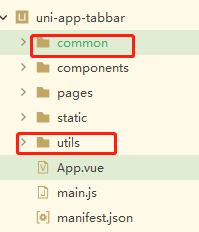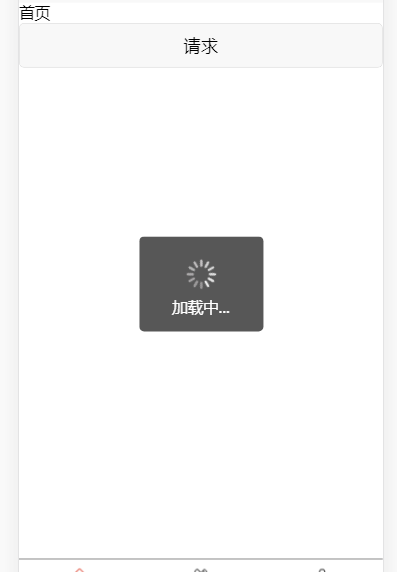先在目录下创建 utils 和 common 这2个文件夹

utils 是存放工具类的,common 用来放置常用方法的
之后在utils 中创建 requset.js 用来放置 uni.request 的请求方法,在对其进行简单的封装。
requset.js 代码
import operate from '../common/operate.js' // vuex 的使用 详情参考官网 https://uniapp.dcloud.io/vue-vuex import store from '../store/index.js' export default class Request { http(param) { // 请求参数 var url = param.url, method = param.method, header = {}, data = param.data || {}, token = param.token || "", hideLoading = param.hideLoading || false; //拼接完整请求地址 var requestUrl = operate.api + url; //请求方式:GET或POST(POST需配置 // header: {'content-type' : "application/x-www-form-urlencoded"},) if (method) { method = method.toUpperCase(); //小写改为大写 if (method == "POST") { header = { 'content-type': "application/x-www-form-urlencoded" }; } else { header = { 'content-type': "application/json" }; } } //加载圈 if (!hideLoading) { uni.showLoading({ title: '加载中...' }); } // 返回promise return new Promise((resolve, reject) => { // 请求 uni.request({ url: requestUrl, data: data, method: method, header: header, success: (res) => { // 判断 请求api 格式是否正确 if (res.statusCode && res.statusCode != 200) { uni.showToast({ title: "api错误" + res.errMsg, icon: 'none' }); return; } // code判断:200成功,不等于200错误 if (res.data.code) { if (res.data.code != '200') { uni.showToast({ title: "" + res.data.msg, icon: 'none' }); return; } } else { uni.showToast({ title: "code!=200" + res.data.msg, icon: 'none' }); return; } // 将结果抛出 resolve(res.data) }, //请求失败 fail: (e) => { uni.showToast({ title: "" + e.data.msg, icon: 'none' }); resolve(e.data); }, //请求完成 complete() { //隐藏加载 if (!hideLoading) { uni.hideLoading(); } resolve(); return; } }) }) } }
在common 中分别创建 operate.js 和 api.js
export default { //接口 api: "http://192.168.208.126:8080", }
api.js 是用来调用我们封装好的 uni.request ,并且统一管理请求接口,在后续开发中只需要在页面中调用 api.js中请求即可
import Request from '@/utils/requset.js' let request = new Request().http //全局定义请求头 export default { // 请求样式 classifyLeft: function(data) { return request({ url: "/category/list", //请求头 method: "GET", //请求方式 data: data, //请求数据 }) }, } /* 请求样式: 自定义名字: function(data) { return request({ url: "/banner", //请求头 method: "GET", //请求方式 data: data, //请求数据 token: token, // 可传 hideLoading: false, //加载样式 }) }, */
api.js的调用可以在main.js 中进行全局调用,也可以在需要的页面中调用,可根据实际情况来决定是否全局 调用。下面只介绍全局调用
1. 在main.js 中引入api.js import api from '@/common/api.js' Vue.prototype.$api = api 2. 在页面中调用 //不传参数 this.$api.sendRequest().then((res) => { console.log(res); }) //传参 this.$api.sendRequest({参数}).then((res) => { console.log(res); })
项目地址:https://gitee.com/jielov/uni-app-tabbar
